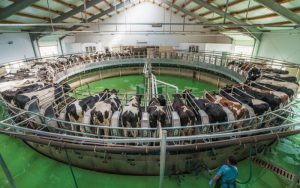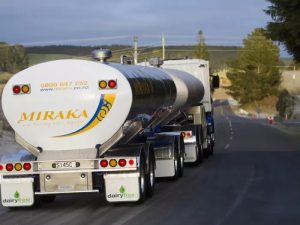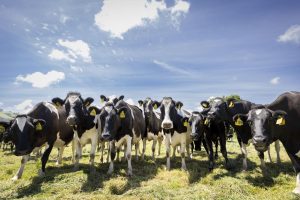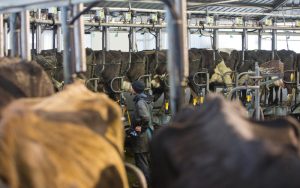
The head of Fonterra Cooperative Group, the world’s biggest dairy exporter, is chasing growth in the $2 trillion food services industry to counter a likely decline in the supply of New Zealand milk.
It’s becoming harder to convert land to dairy due to environmental constraints, and Fonterra Chief Executive Officer Miles Hurrell expects that to weigh on milk production. Output may stay flat or drop 2% to 3% through 2030, he said. That’s a turnaround from the 4.1% annual growth in the two decades through 2016 that made dairy New Zealand’s biggest export earner.
The subdued production outlook and the need to strengthen the cooperative’s balance sheet provided the impetus for Fonterra to set out a vision for a slimmed down company. Under the strategy released in September, it aims to expand its food services, nutrition and consumer businesses, and move away from mainly shipping large quantities of milk powder.
Growth in food services, which entails supplying dairy products to restaurants, bakeries and coffee shops, will build on Fonterra’s platform in China and expand that further afield into places like Southeast Asia, Hurrell said in an interview in Singapore.
Fonterra also wants to continue investing in key brands such as Anchor and Anlene, as well as new products like Nurture, a probiotic milk drink, he said.
Founded in 2001 from a merger of the country’s two biggest dairy companies and the agency that controlled dairy exports, Fonterra was promoted as a competitor for global food companies like Nestle SA. It didn’t really live up to that promise however, with the milk giant struggling to climb the value chain.
With its latest strategy, Fonterra is tapping a trend toward Western diets across Asia that’s spurring people to use more dairy in their cooking and baking. It also wants to boost the amount of the co-op’s milk used by its consumer, food service and nutrition units to 35% by 2030 from around a quarter currently.
The strong growth in milk output was beneficial for New Zealand’s dairy industry as a whole, but it was also a challenge for Fonterra to keep having to find new markets, Hurrell said. “Has that distracted from focusing and targeting behind investing in our key brands? Probably it did.”

Fonterra will sharpen its focus on Asia as it looks to sell assets in South America. There has been interest in the Chilean business for a number of years and plans are “progressing well,” Hurrell said.
The co-op is also mulling options for its Australian unit including an IPO, a cornerstone shareholder or partnering with a food company, he said. It will retain a majority stake whatever it does, and there should be some more clarity around what will happen in the next three to six months, Hurrell said.
“There’s an aspirational aspect to Fonterra’s 2030 objectives and significant investment will need to be made,” said Arie Dekker, head of institutional research at Jarden Securities Ltd. in Auckland.
As the world becomes more environmentally conscious and feed costs like corn and wheat are rising globally, New Zealand’s predominantly grass-fed cows have an advantage over barn-based systems predominant in Europe and North America, where the livestock is mainly fed grains, according to Hurrell.
“That’s a hugely valuable proposition for us,” he said. “At a time when customers and consumers are wanting to know where their product comes from, how it’s produced, how the animals are treated.”























